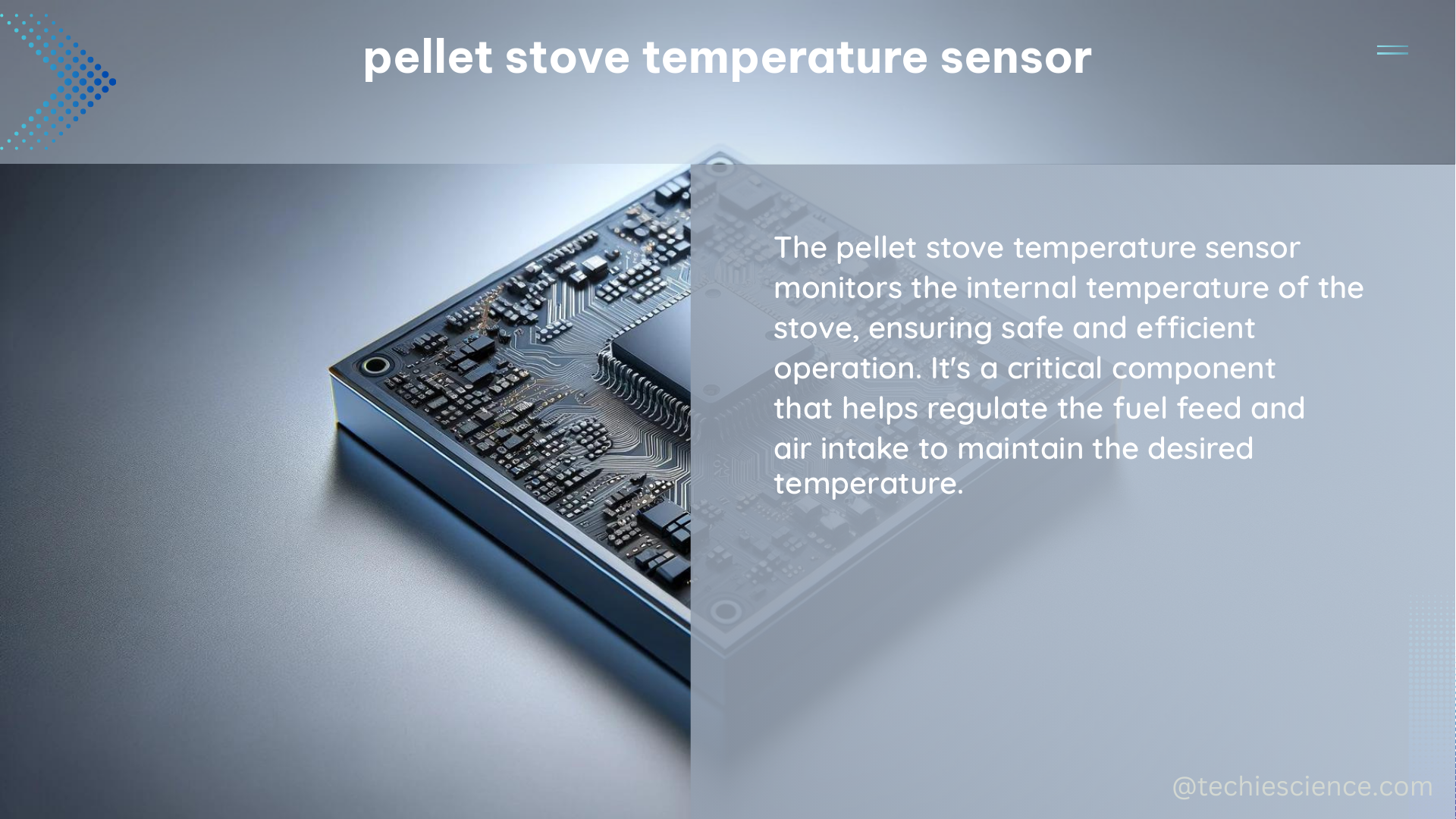The pellet stove temperature sensor is a critical component in the efficient and safe operation of a pellet stove. This sensor measures the temperature of the stove and relays this data to the control panel, which then adjusts the fuel input to maintain the desired temperature. Understanding the technical specifications and practical applications of the pellet stove temperature sensor is essential for optimizing the performance of your heating system.
Measuring the Temperature: Sensor Specifications
The pellet stove temperature sensor typically has a measurement range of several hundred degrees Celsius, with a high level of accuracy and precision. The LM335 and LM35 temperature sensors, commonly used in pellet stove applications, have a measurement range of -55°C to +150°C with an accuracy of ±0.5°C at room temperature.
Table 1: Comparison of LM335 and LM35 Temperature Sensor Specifications
| Specification | LM335 | LM35 |
|---|---|---|
| Measurement Range | -55°C to +150°C | -55°C to +150°C |
| Accuracy | ±0.5°C at 25°C | ±0.5°C at 25°C |
| Supply Voltage | 4V to 30V | 4V to 30V |
| Output Voltage | 10mV/°C | 10mV/°C |
| Linearity | ±0.2°C | ±0.2°C |
The Electronic Reporting Tool (ERT) User’s Guide Version 6 provides detailed technical specifications for wood heater lab data entry, including the temperature data (E2515-11) for pellet stoves. This guide includes figures and tables that outline the data entry process, header data, point data, and calculations/results for the temperature data.
Monitoring and Optimizing Pellet Stove Performance

In addition to the temperature sensor, other sensors and measurements can be used to monitor and optimize the performance of a pellet stove. These include:
- Weight Sensor: Measures the amount of fuel (pellets) in the hopper, providing valuable data for fuel management and consumption tracking.
- Pressure Sensor: Measures the pressure in the water circuit, which can be used to detect any issues or blockages in the system.
- Airflow Sensor: Measures the airflow through the stove, which can be used to optimize the combustion process and ensure efficient heat transfer.
By integrating these sensors, you can gain a comprehensive understanding of your pellet stove’s performance, allowing you to make informed decisions about maintenance, fuel management, and system optimization.
DIY Projects: Automating Pellet Stove Temperature Monitoring
There are several online resources available for DIY projects related to pellet stove temperature sensors. The Arduino Forum, for example, has a thread discussing the use of temperature sensors to measure the filling level of a wood-burning stove, including suggestions for sensors and data collection.
The Reddit community for home automation also has a thread discussing the automation of a pellet stove, including the replacement of the temperature sensor wire with an ESP (Espressif Systems) microcontroller. This approach allows for wireless monitoring and control of the pellet stove, providing greater flexibility and integration with smart home systems.
When embarking on DIY projects involving pellet stove temperature sensors, it’s essential to have a solid understanding of the technical specifications, wiring diagrams, and programming requirements. Consulting online forums, manufacturer documentation, and seeking guidance from experienced DIY enthusiasts can help ensure a successful and safe project.
Conclusion
The pellet stove temperature sensor is a crucial component in the efficient and safe operation of a pellet stove. By understanding the technical specifications, such as measurement range and accuracy, as well as the integration of additional sensors for comprehensive performance monitoring, you can optimize the performance of your pellet stove and ensure reliable heating for your home.
Whether you’re a DIY enthusiast or a professional HVAC technician, mastering the intricacies of the pellet stove temperature sensor can unlock a wealth of benefits, from improved energy efficiency to enhanced user experience. By leveraging the resources and information provided in this guide, you can take your pellet stove to new heights of performance and reliability.
References
- Pellet stove temperature sensor fix – YouTube. (2023). Retrieved from https://www.youtube.com/watch?v=I9IGtIFg_r8
- Electronic Reporting Tool (ERT) User’s Guide Version 6. (2021). Retrieved from https://www.epa.gov/sites/default/files/2021-03/documents/electronic_reporting_tool_v6_user_manual_march_2021.pdf
- Study of American Wood Pellet Stove Emissions – Cornerstone. (2019). Retrieved from https://cornerstone.lib.mnsu.edu/cgi/viewcontent.cgi?article=1962&context=etds
- Measuring wood-burning stove filling level – Arduino Forum. (2015). Retrieved from https://forum.arduino.cc/t/measuring-wood-burning-stove-filling-level/282111
- Automating pellet stove: How to replace temp sensor wire with esp – Reddit. (2022). Retrieved from https://www.reddit.com/r/homeautomation/comments/zfmmi6/automating_pellet_stove_how_to_replace_temp/

The lambdageeks.com Core SME Team is a group of experienced subject matter experts from diverse scientific and technical fields including Physics, Chemistry, Technology,Electronics & Electrical Engineering, Automotive, Mechanical Engineering. Our team collaborates to create high-quality, well-researched articles on a wide range of science and technology topics for the lambdageeks.com website.
All Our Senior SME are having more than 7 Years of experience in the respective fields . They are either Working Industry Professionals or assocaited With different Universities. Refer Our Authors Page to get to know About our Core SMEs.